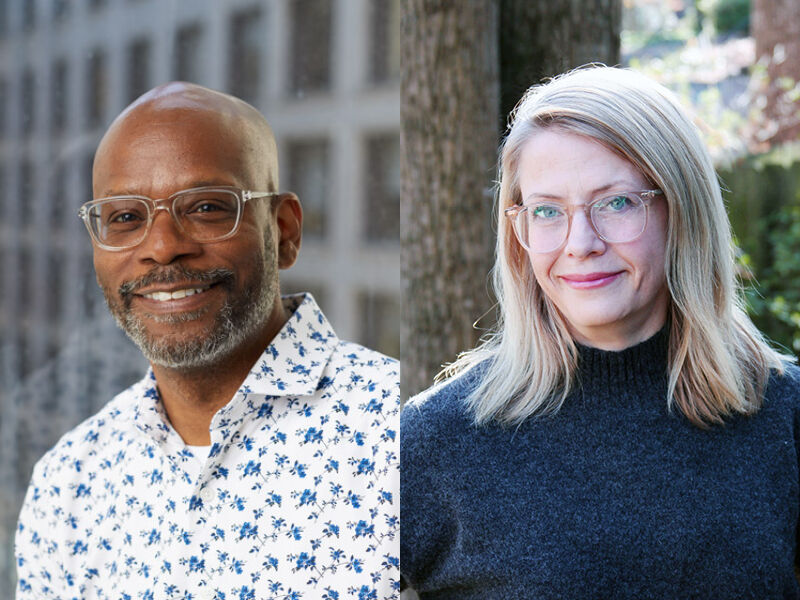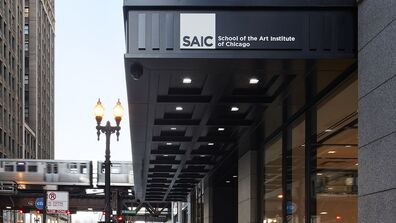
Striving for Anti-Racism

Jefferson Pinder and Delinda Collier
In response to the calls for racial justice in the United States and throughout the world, the School of the Art Institute of Chicago (SAIC) announced the formation of a new Anti-Racism Committee (ARC). ARC will be the primary faculty, student, staff, and board body that will continue the School’s decade-long efforts to be a more diverse, equitable, and inclusive college. With the beginning of the new academic year, ARC co-chairs Delinda Collier, interim dean for graduate studies, and Jefferson Pinder, director of diversity, equity, and inclusion for academic affairs, answered our questions about ARC—its mission and ambitions—in its formative days.
What is ARC's charge?
Jefferson Pinder: The Anti-Racism Committee tasks this group of staff, faculty, students, and board members to take a hard look at how we run the School and see where it could be more diverse, more inclusive, and more anti-racist. We’re going to name those places where we fall short and propose ways to make the experiences of those how study and work here—especially Black people—better.
Delinda Collier: Under this charge, we aim to enact some short-term solutions—as early as this semester—and by next year have a long-term strategy to help SAIC continue to evolve toward anti-racism in how we teach, learn, organize ourselves, and pursue our practices and scholarships.
Will ARC engage the SAIC community?
DC: ARC’s charge compels us to help catalyze change throughout the institution, but helping our School work against the tide of structural violence that exists throughout the world’s social structures takes more than the work of a couple dozen committee members.
JP: And more than just our committee, members are eager to get involved. We’ve been fielding requests from throughout the community. We have so many volunteers who want to be a part of institutional change. More, in fact, than our main committee has room for.
DC: Which is why we’re asking some of the people who have reached out to us to join ARC’s subcommittees, which each take a deep dive into specific facets of the School, like recruitment of students and staff, curriculum, and campus climate.
JP: And through the work of ARC and its subcommittees, we’ll also be creating more ways to get involved and establish transparent modes of communication so that everyone can keep informed.
Does this enthusiasm from the community give you hope for this work?
JP: Absolutely, but it’s more than just enthusiasm. It’s awareness, too. Everyone is talking about anti-racism. There is a greater thirst for education and action than I have ever seen. People want to mobilize. ARC is a primary vehicle for how we are going to channel this enthusiasm here at SAIC.
What is the unique role of an art institution in the larger anti-racism movement?
JP: Something really vital to communities of artists, and you definitely feel it at SAIC, is the expectation of empathy. Artists, designers, educators: we build affective bonds. We feel each other, and that is something crucial to equity movements. We measure and seek to improve things like hiring demographics and graduation rates, but ideally, those things are byproducts of people flourishing. Anti-racism is about removing barriers so that everyone is at liberty to find their voice, make their work, and fully contribute to a diverse and inclusive society.
DC: The history of art is full of artists making exactly those kinds of permissive, caring spaces that seek unconventional ways of being, solve problems creatively, and expand our vision for who we can be.
What can students, faculty, and staff do daily to contribute to making SAIC an anti-racist institution?
JP: First and foremost, don’t be a jackass. That sounds pretty straightforward, but it can be hard with so much going on—and going wrong—in the world. We can all experience a little compassion fatigue. But don’t lose your connection to your ability to care for one another. For your classmates and colleagues. For yourself. SAIC is a place we choose to be, and we can choose to make it better.
DC: Trust your agency to effect change. We are trying to change the system in a major way, and no one feels like they have all the answers. So, take the opportunity to ask questions and offer ideas. Especially if you are in a room where decisions are being made. Recognize constructive critique and applaud it. Especially when you are receiving the critique.
JP: Understand the momentum we can all feel, and support it. Ask yourself, “Did I do enough today?” If not, make a plan to do more tomorrow.
